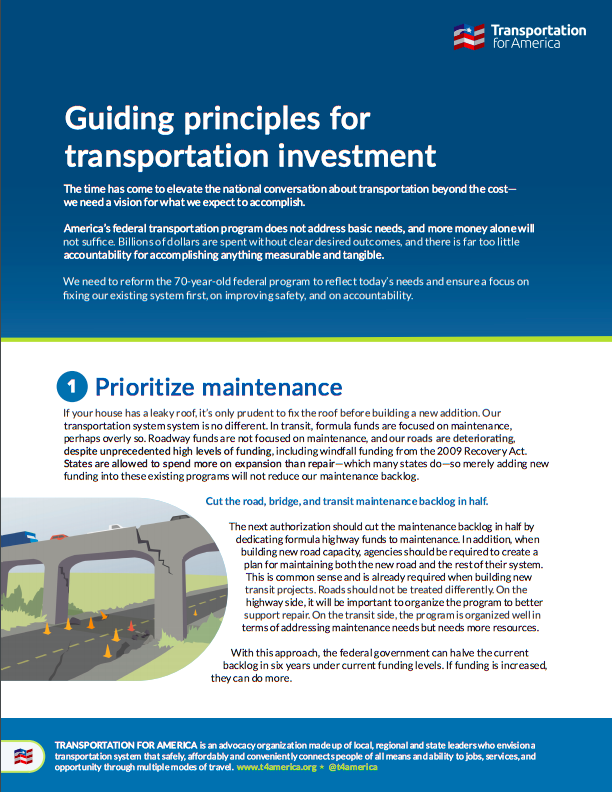Posts Tagged "FHWA"
USDOT proposes to remove restrictive design guidelines that make safer streets more difficult to build
The Federal Highway Administration (FHWA) took an encouraging and surprising step, proposing to ease federally-mandated design standards on many roads, making it dramatically easier for cities and communities of all sizes to design and build complete streets that are safer for everyone.
Announcing a new academy for local leaders who want to dig in on performance measures for transportation
In partnership with the Federal Highway Administration (FHWA),T4America is announcing a new yearlong training academy for metro regions hoping to learn more about (and start using) the emerging practice of performance measurement, and applications are open now.
Hold states accountable for repairing roads and bridges – send a letter to USDOT
The U.S. Department of Transportation is in the process of writing new rules to hold states accountable for the condition of their roads and bridges. USDOT’s strong first draft rule was a step in the right direction, and we want to thank them — and ensure they don’t bow to pressure to soften these requirements.
Credit where it’s due: With repair rule, the feds listened to public comment
In developing new standards for ensuring our roads and bridges are kept in good condition, officials at the U.S. DOT did something skeptics would find surprising: They really listened to public comment, and reflected it in the newly released rule.
Drop in driving growth is likely permanent, FHWA acknowledges, compounding the threat to transportation revenues
Following years of the gas tax losing its value due to inflation and a vehicle fleet becoming more efficient, a federal transportation agency has finally issued a more realistic projection of future driving that ensures that today’s gas tax won’t be a sustainable funding source for transportation investment.





